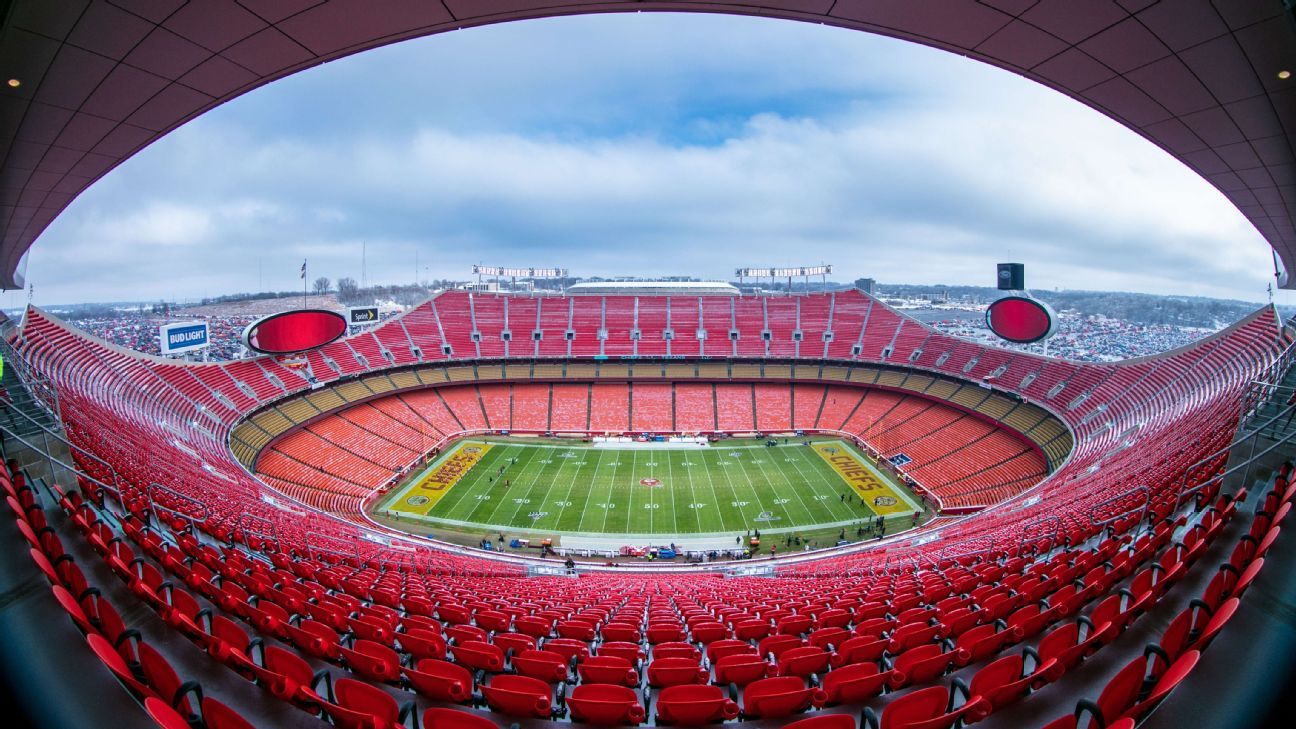It has been 110 days since Jeff Pash, the NFL’s executive vice president and general counsel, announced an unexpectedly bold plan for the 2020 season amid a coronavirus pandemic that was only starting.
“All of our discussions,” Pash said, “all of our focus, has been on a normal, traditional season, starting on time, playing in front of fans, in our regular stadiums, and going through a full 16-game regular season and a full set of playoffs. That’s our focus.”
At the same time, Pash acknowledged the obvious. The date was March 31, which meant the NFL had months to figure out how to pull it off. But that time has dwindled. Rookies and selected veterans are scheduled to report to training camp Tuesday, with full squads anticipated one week later. Texans and Chiefs rookies are expected to report Monday, as those teams are scheduled to play the league’s Thursday night opener Sept. 10.
Can the NFL pull off an on-time start to training camp, much less a season? In the time since Pash made his announcement, the United States flattened its daily virus count — only to see a surge in infections and hospitalizations this summer in Southern states. Major League Soccer and the National Women’s Soccer League are the only major professional team sports to make it back on the field, although MLB, the NBA and the NHL have entered the early stages of their return.
Dr. Allen Sills, the NFL’s chief medical officer, said recently that the NFL hopes to plow a road for the entire country as it deals with the pandemic.
“I think this is important not just for the NFL or for professional sports — not even for sports at all levels,” Sills said at a virtual meeting of the American Orthopaedic Society for Sports Medicine. “I think what we are trying to do — which is to find a way to mitigate risk and to coexist with this virus — this is really key information for schools, for businesses, for all segments of society. I think we have a unique opportunity but also a responsibility to use the platform and resources of the NFL to really study and learn and to take that knowledge and apply it for the benefit of the other segments of the society. That is what we plan to do.”
Thursday night, NFLPA representatives had a conference call with several NFL team physicians, who gave the players their reasons why they felt it was safe to start training camps with COVID-19 protocols in place. On a video conference call with reporters Friday, NFLPA executive director DeMaurice Smith said the players want to go back to work but that the union and the league continue to negotiate important health and safety measures involving testing and opt-out procedures, as well as economic issues involving the impact of lost 2020 revenue on the 2021 salary cap. Sources say those negotiations are expected to continue through the weekend, and that it’s possible the league and union could start camp if they’ve agreed on the health and safety portion of the negotiations while still working through the financial portion.
Let’s review what we know about the NFL’s plans to return and recognize how much more must be decided in the coming days and weeks for Pash’s goal to be realized. We’ll return weekly to update you on the league’s progress.

What we know about the 2020 NFL season
1. All training camps will be at team facilities this year. When they report, football personnel — players, coaches, equipment managers, medical staffers — will largely be isolated from the remainder of team employees. They will have a separate, designated entrance to the building. Practice fields, locker rooms, athletic and medical rooms, meeting rooms and weight rooms will all be restricted to people classified as Tier 1 (players and other people who need at least 10 minutes of daily access to restricted areas) or Tier 2 (people who need periodic access to restricted areas). There can be a maximum of 60 Tier 1 designees, not including players, on a daily basis.
2. Teams have been asked to retrofit their facilities as much as possible to account for 6 feet of physical distancing. Details will vary based on facility design, but in general, it will mean rearranging and/or expanding locker rooms into temporary areas. The league also has provided instructions on creating one-way traffic through hallways. It has mandated individual appointments with athletic trainers and limited weight room workouts to 15 or fewer players. Virtual meetings are encouraged, and in-person meetings are limited to 20 people. All players and staff must wear a mask when inside the facility, although players are not required to wear them during workouts. Players and team personnel are instructed not to share “towels, water bottles, food or clothing with others,” and any shared equipment must be cleaned after each use.
3. Team showers must accommodate 6 feet of distancing, even if that means shutting off some shower heads. Saunas and steam rooms will be closed.
4. Teams must maintain a two-week supply of personal protective equipment (PPE) for medical officials.
5. This arrangement will not be a “bubble” like the plans in motion with the NHL and NBA. By agreement between the NFL and NFL Players Association (NFLPA), players will have the option to stay at a team-sponsored hotel, but will not be required to. They can spend their nights at home, except on the night before preseason games. (More on preseason games in a moment.) Teams will be required to hold a safety information session with family members, among other education efforts designed to teach employees how to minimize risk of infection outside the facility. On a recent NFLPA call, players were told they could face discipline, including fines, if they were found to have contracted and spread the virus as a result of reckless behavior outside of the team facility, such as eating in restaurants or using rideshare services. Rams offensive tackle Andrew Whitworth joined the NFLPA’s call with reporters Friday to relay a story about how a member of his family contracted the virus while having lunch out with a friend and soon it had spread to Whitworth, his wife, his children and his wife’s parents. “Players are going to have to be careful outside the building,” Whitworth said. “All it takes is one exposure, and it can spread like wildfire.”
6. Players or team employees who have symptoms are instructed to immediately notify the team physician and/or trainer, immediately self-isolate in a separate room, put on a mask and be transported home to quarantine as soon as possible. A symptomatic employee who tests positive must avoid the team facility for at least 10 days, is prohibited from traveling or having any direct contact with any player or club employee other than medical staff, and can’t return until 72 hours have passed since symptoms last occurred and they have been cleared by the team physician. A person with an asymptomatic positive test must stay away for 10 days, or else five days since the initial positive test and after two consecutive negative tests with at least 24 hours in between. That person must also be cleared by the team physician prior to return. There will be additional cardiac screening for players who have tested positive and recovered or who test positive for COVID-19 antibodies.
7. In the event of a positive test, the NFL has contracted with IQVIA — a third-party firm that also analyzes league injury data — for contact tracing to determine whom the person has been in close contact with during the incubation period. If there is a fear of in-game exposure, the NFL will make use of radio-frequency identification tracking devices embedded in each player’s shoulder pads to determine whom that player was within 6 feet of during the game. Anyone who engages in team activities will be required to wear a Kinexon proximity recording tracking device, which would allow contact tracers to find the close contacts of someone who tested positive. Players and all team personnel, up to and including team owners, will be required to wear the contact tracing devices while at the facility, but not when they are away from it.
8. Protocols will be enforced by unannounced inspections conducted jointly by the NFL and NFLPA, and club officials who knowingly violate the policy will be subject to discipline.
9. Early training camp practices will look different. Because the entire offseason program was conducted virtually, with no actual football work, the NFL and NFLPA have agreed that there should be a longer acclimatization process. It will begin with two days designated for medical exams and equipment fitting, and more than a week could pass before players participate in full team drills. The specifics of the acclimatization process are still a matter of negotiation between the league and the union. Union president JC Tretter on Friday detailed the union’s proposal, which he said grew out of discussions with doctors. The players are asking for 21 days of strength and conditioning work followed by 10 days of non-padded practices and then 14 days of “contact acclimation” process in which practices could be conducted with pads.
10. No fans or visitors will be allowed at team facilities during training camp. Teams can host up to two practices at stadiums with fans in the stands, providing state and local regulations allow it.
11. The NFL and the NFLPA are in disagreement about preseason games. The NFL has made plans for each team to play two games, one at home and one away, around the weekends of Aug. 20-24 and Aug. 27-31. The NFLPA’s board of player representatives voted to endorse a plan for no games, and the two sides continue to negotiate on this issue. The owners remain opposed to the elimination of all preseason games, believing they still serve an important player-evaluation purpose. Smith said Friday that “to engage in two games where players would be flying all over the country and then engaging with each other to work, and to do that prior to the season, doesn’t increase the likelihood of starting and finishing the season on time.” Recent discussions have raised the possibility of going down to just one preseason game, but the players still would like to get to zero.
“Wear a mask and socially distance if you want to see football and all sports come back.”
-NFLPA President @JCTretter imploring the country to do its part because the NFL doesn’t exist inside a bubble. pic.twitter.com/513nP9cadq
— Golic and Wingo (@GolicAndWingo) July 8, 2020
12. If there are preseason games, they will follow the same protocol the NFL and NFLPA have established for regular-season games. Visiting teams will travel the day before the game. Stadium locker rooms must be retrofitted to ensure social distancing, as much as possible. Masks for coaches and nonparticipating players are encouraged but not required. Players must maintain 6 feet from one another after games, eliminating postgame handshakes and jersey swaps.
13. Most media interviews will be conducted via video conference, and locker rooms will be closed to reporters. Reporters placed into “Tier 2M” will have access to parts of the team facility and practice field, provided they pass screening protocols.
14. There will be new rules in place for teams while they travel, including buses operating at no more than 50% capacity, at least one open seat between passengers on team planes and no sharing of hotel rooms. (This probably means more buses and larger planes, which teams are exploring.) All players and team personnel must wear face coverings while on the road. Players and team personnel will not be allowed to leave their hotel rooms to eat in or otherwise use restaurants that are open to the public. They may order room service or delivery from contactless food delivery services. Players and team personnel may not use public or private transportation to or in other cities, just team buses and planes. While at the hotel, no player or other member of the traveling party may have visitors in their rooms who are not members of the traveling party. And no one in the traveling party will be allowed to use shared hotel facilities such as gyms or pools unless they have been disinfected and are only being used by the team traveling party.
What we don’t know about the 2020 NFL season
1. The biggest unanswered question is how the NFL and NFLPA will deal with the strong likelihood of reduced 2020 revenues. There have been some discussions — the NFLPA considered a proposal to put 35% of salaries in escrow a nonstarter — but nothing close to an agreement. The NFL’s salary cap is designed to spread the gains and losses among owners and players by an agreed-upon ratio, but that would lead to a big drop in cap figures for 2021. The players’ union favors a plan that would spread the revenue hit out over several years, keeping the salary cap flat or increasing it only slightly until revenues are caught up. The owners prefer to take the hit in the short term and then quickly return to the annual rate of cap growth the league has seen over the past decade. The union’s concern is the short-term impact a significant reduction would have not only on player salaries but also on players’ health benefits, which are calculated as part of the player costs under the salary cap. The sides are well aware of, and hope to avoid, the spectacle that MLB made of its economic negotiations.
2. The league and union are discussing financial accommodations for players or other team employees who want to opt out of the season, either because of preexisting conditions or reticence with the safety protocols. Would they lose their jobs? Be put on unpaid leave? Could they be paid a reduced salary? There has been progress made in recent negotiations on the opt-out rules — go here for more details on the proposals — and there’s an expectation from both sides that a reasonable compromise can be reached there.
0:59
Jeremy Fowler reports that the NFL Players Association is negotiating to have opt-out clauses for players with at-risk family members in regard to COVID-19.
3. Details aren’t clear on how the NFL will account for what could be significant roster churn based on infections and isolation time. Expanded active rosters and bigger practice squads are both in play. The league and the union are discussing establishment of a new, COVID-specific injured reserve list that would allow a player to return after a short period of time, such as three weeks.
4. Some details of the testing program haven’t been finalized, most notably the weekly frequency. That number could be influenced by the delays other sports have faced in receiving results. Long waits for results reduce the effectiveness of testing in minimizing infection and increase the possibility of spread. The union has asked for daily testing, and the league has proposed testing every other day. Sources close to the discussion say the NFL’s medical advisers don’t believe daily testing is necessary and that it can lead to a false sense of security, and the league is concerned about a possible public perception that it would be taking up too high a number of testing resources from the teams’ local communities. This remains a negotiating point, and there is a potential compromise that involves testing every day at the beginning of camp and then moving to less frequent testing as everyone grows more used to the protocols and safety measures at the facilities.
5. There has been some discussion of changing the way game officials are assigned to games but no plans are final. One idea has been to assign them by regions based on where they live to minimize travel.
6. The NFL and NFLPA have been working with vendors on a face shield that would be attached to helmets and could minimize spread of the virus during a game. Some players, including J.J. Watt, have expressed concerns about the potential for restricted breathing and potential fogging. It’s unlikely they will be made mandatory, and it’s uncertain if they will be available for use at all.
7. The NFL has proposed fining players who violate health and safety protocols, and potentially putting the rest of the team at risk, but the NFLPA has not agreed to it.
8. The NFL will allow each team to determine its policy for allowing fans into stadiums for games. But all that is known for sure is that the first eight rows of every stadium will be tarped off for distancing purposes. Because state and local guidelines have changed several times this summer, plans for fans remain in flux. The league says decisions on the number of fans in stadiums will be determined on a market-by-market basis with guidance from public health experts and in accordance with local and state guidelines. Because the league does not consider this an issue of competitive impact, there could be variances throughout the league — i.e., fans in some stadiums but not others. The league is in touch with each club on this matter, and if fans are permitted in a specific stadium, the expectation is that the club will have some number of fans in that stadium – as long as the number is in compliance with government guidelines and following public health authorities.


